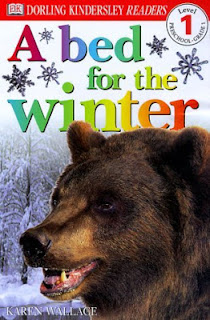A few weeks ago we read a couple books about feeding the animals in the winter that sparked a three week inquiry about how the animals survive in the winter (See
Taking Care of the Animals in Winter post from January). Here are just a few of their questions:
What happens to the animals that don't find our food?
How do they stay warm?
How do they find food?
What do whales do in the winter when the water turns to ice?
What do deer do for food?
What about the birds? There is no food for them either!
The questions kept coming so we started inquiring to find out some answers! Here are a few books we read as we investigated:
We also watched many videos on our promethium board that showed us animals that hibernate, adapt and migrate. After we investigated, we organized our data by creating web maps. These kids are a little obsessed with making web maps. It is their favorite way to organize data! Here are our web maps:
The kids also picked an animal from each chart and wrote about how it survived in the winter.
After reading Owl Moon, (they learned that owls adapt) the kids created some art inspired by the cover! They turned out beautiful!
When studying about migration, we learned a lot specifically about geese, terns, monarchs and whales. They studied maps that showed where these animals migrate. We took one day to roll play how and why geese migrate! We went outside in the cold and flew to a grassy area of our playground. We squatted down like geese and looked for food. A couple sentries noticed a fox and warned us so we had to move!
When we noticed how cold it was and that there was no food, we got into a "V" formation and migrated back to our warm classroom where food (goldfish) was waiting for us at our tables.





Now that we have investigated and organized our information, we are ready to create a project to show what we have learned. The kids have decided to create a three dimensional project that shows hibernation, migration and adaptation. We discussed what learning we wanted our project to show. They said they wanted to show that they learned some animals hibernate, some animals migrate and some animals adapt to survive the winter. They brainstormed and decided they needed to create the habitats first. The class divided into three groups. One group will work on hibernation, one group will work on migration, and one group will work on adaptation. They all signed a paper showing what subject they choose to work on. So far, the hibernation group has decided to make a cave, the adaptation group will create a winter forest scene and the migration group is going to create an ocean and sky. All three will fit together to create one big area in our room. Our science table has been chosen for the area to create the project. They brainstormed materials that we will need and we are looking around our school and our homes for things that would help us!


When we come back on Monday, each group will investigate the habitats they need to create. They will create sketches and come up with a plan for their part. After that, we will begin building the habitats for our project.
After we build the habitats, the second step will be to create the animals. The third step will be to create the labels showing what we learned. Each group is planning to present their part to the rest of the class when the project is done. They are also talking about adding some roll playing elements to their presentations. If time allows, they would also like to invite other classes to come and see them present what they have learned about animals in winter. This group does not do anything half way! I am very excited to see how they do with this. (I am actually excited and nervous about how I will do with this! This will be the biggest project I have had a class take on! I have a lot to figure out! I will keep you informed on each step of the process!)





















































